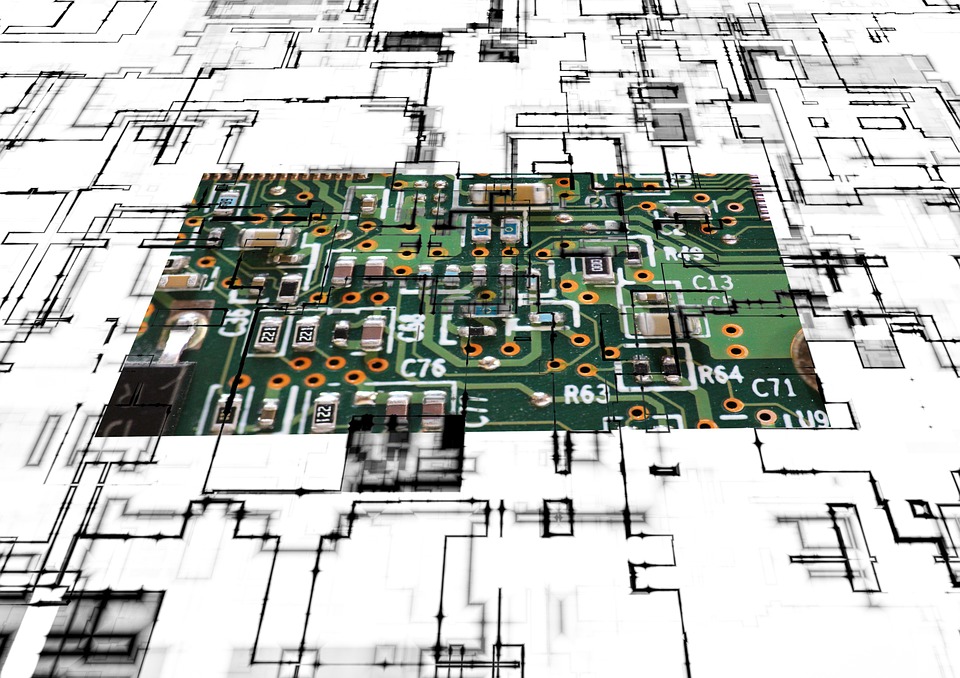Printed circuit boards are inarguably one of the most influential inventions of the 20th century. Nearly every piece of technology today uses at least one of these devices, and they’ve played roles in historically significant events like World War II and space travel. To gain an appreciation for PCB technology, let’s look at several significant moments in the history of circuit boards.

1.
Albert Hanson Comes Up With an Early Circuit Board
Before printed circuit boards emerged, a few technologies paved the way for their invention. One such invention was a primitive circuit board, a precursor to the first true PCB. German scientist Albert Hanson filed a patent for this innovation in England in 1903.
Hanson’s early circuit boards were intended to simplify telephone exchange boards. These wires had flat, conductive pieces of foil attached to wires. The printed wires were then bonded to a flat surface, such as paraffin paper.
By today’s standards, these circuit boards appear crude. However, Hanson’s circuit boards had many traits common in later PCBs, including conductors on both sides and an early version of through-hole construction. Hanson’s boards can be considered one of the very first circuit inventions.
2.
Charles Ducas Invents “Printed Wires”
In 1927, US inventor Charles Ducas patented another major advancement in circuitry technology. His circuit method placed an electronic path directly onto an insulated surface. The wires were printed onto the board through a stencil, and the ink applied could conduct electricity. This process is an early version of electroplating and makes it clear why Ducas’s invention is known as printed wiring.
In a few small ways, Ducas was also able to foresee the future of circuit boards. For example, his writings describe the possibility of creating multilayer circuit boards by connected several boards together.
3.
Paul Eisler Brings Forth the First PCBs
Perhaps no single person looms larger in the history of PCBs than Paul Eisler. He is widely credited with inventing the first printed circuit boards during World War II.
Although he had an engineering degree from the Vienna University of Technology, Eisler spent much of his early career in the printing industry. He used his inventor’s mind to contemplate the idea of printing electronic circuits on boards rather than hand-soldering each wire.
Political pressure and discrimination from the Nazis led Eisler, a Jew, to leave his home country of Austria in 1936. He moved to England where he encountered additional hardships, including struggles to find employment and incarceration after he was accused of being an illegal alien.
In 1941, Eisler was released and found a job at a music printing company. He went to work modifying a music typewriter before finally sharing his printed circuit board idea with the company. The company invested in the invention.
Eisler’s early PCBs were first used in small radio sets intended for use by the British and American military during World War II. The US military ended up incorporating PCBs into anti-aircraft shells.
4.
The US Army Patents the Auto-Assembly Process
Following World War II, printed circuit boards moved beyond communications and military applications and into consumer electronics. This transition was made possible because the US Army developed a process that sped up the creation of PCBs. Specifically, two men in the Army Signal Corps are credited with coming up with the auto-assembly process.
In this process, a layer of copper foil gets laminated to a base material. The wiring pattern is drawn on this surface with an acid-resistant ink. The portions of copper not protected by this ink get removed, leaving the printed copper wires behind. Next, this copper pattern is photographed onto a zinc plate, which becomes the model for printing additional copies of the circuit board.
The pattern pieces also have holes where wires, leads, or other components attach to the printed boards. Finally, components get attached to the printed board, and the entire board gets submerged in molten solder, which connects the leads to the board.
That’s only a simplified description of this process, and it may still sound very complex. However, it did make it much easier for PCBs to get produced. This process paved the way for PCBs to become commonplace in consumer products.
5.
PCBs Go to the Moon
Space exploration in the late 1950s and 1960s would not have been possible without printed circuit boards. For example, printed circuit boards were used in the spacecraft built for NASA during the Apollo program. PCBs even existed on the spaceships that sent Neil Armstrong, Buzz Aldrin, and Michael Collins to the moon on Apollo 11.
PCBs are ideal parts for spacecraft because they can perform complicated electronic tasks without using too much electricity and because they weigh very little. Lighter machine components decrease the spacecraft’s weight, which lowers the amount of energy needed to launch a rocket or a space shuttle.
Whether you are developing a consumer product, inventing cutting-edge technology, or simply using hidden PCBs every day, the information above shows how important this invention is to our world. Contact Streamline Circuits for more information about PCBs.
PCB Manufacturing and PCB Assembly Contact Season Multilayer.